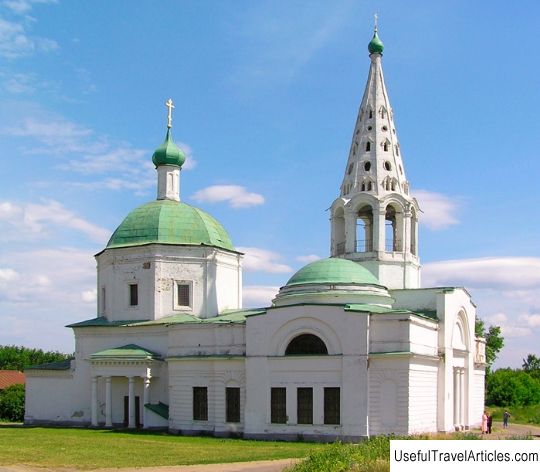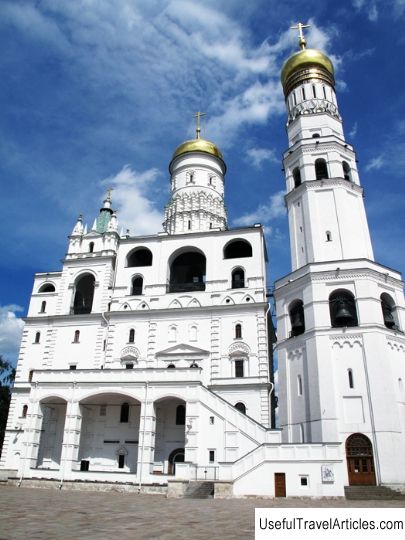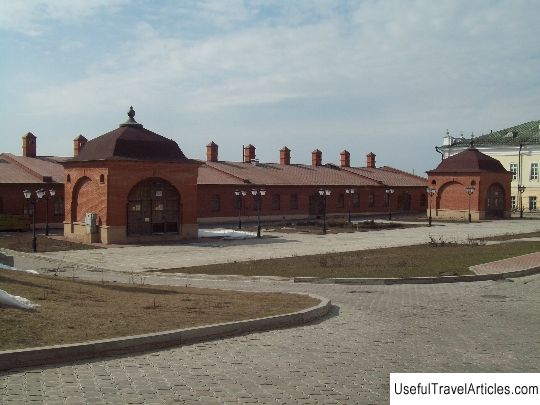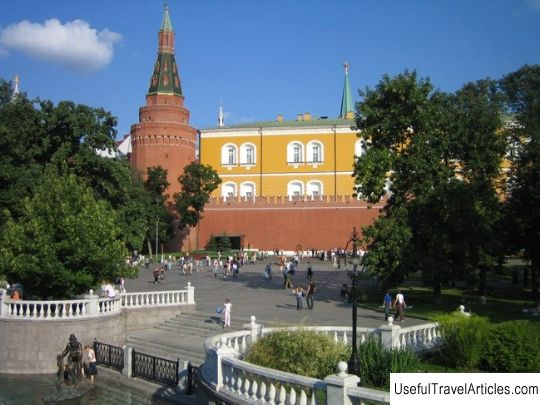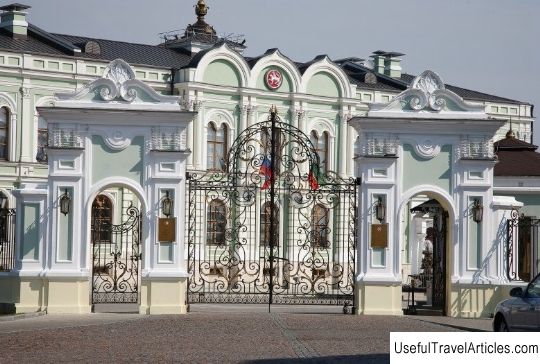Arsenal of the Moscow Kremlin description and photo - Russia - Moscow: Moscow
Rating: 8,1/10 (764 votes) 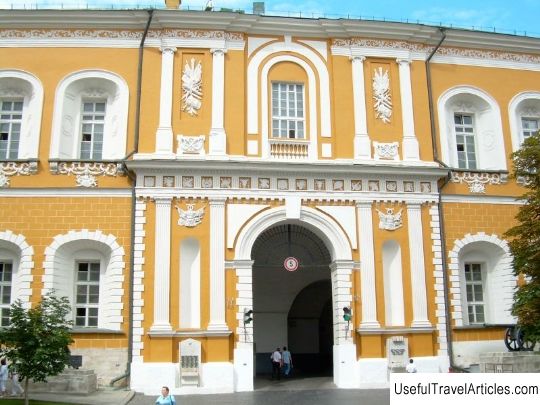
Moscow Kremlin Arsenal description and photos - Russia - Moscow: Moscow. Detailed information about the attraction. Description, photos and a map showing the nearest significant objects. Photo and descriptionArsenal, or Zeikhhaus, is a building located in the northern part of the Moscow Kremlin, between Nikolskaya and Troitskaya towers. This is the largest building in Moscow built during Peter's time. The construction of the Arsenal building marked the beginning of large-scale construction on the territory of the Moscow Kremlin. It is a two-storey building, built of bricks and decorated with two rows of arched window openings with deep slopes, arranged in pairs. The building resembles an elongated trapezoid in plan and has a large courtyard. From the north-west and from the north-east, the walls are closely adjacent to the fortress Kremlin wall. The southern and eastern facades have entrances to the courtyard. The entrances are marked with porticoes with features of the Baroque and Classicism styles. The height of the building is more than thirty meters. The construction of the building began in 1702 by order of Peter I on the site of the grain warehouses destroyed by fire in 1701. The new building was supposed to be used as a storage of war trophies, a museum of ancient weapons and as a military At first, the work was carried out under the guidance of architects M. Choglokov, H. Konrad and D. Ivanov. Since 1731, the construction was carried out by Field Marshal B.H. Minikh and the architect Schumacher. The roof of the building was covered with gilded tiles. Due to the war with Sweden and lack of funds, construction proceeded at a slow pace, and was completed only in 1736. During a fire in 1737, the Arsenal building was badly damaged. Restoration work began only in 1786 and continued until 1796. The work was supervised by the architect M. Kazakov, and the engineering part of the work was supervised by A. Gerard. During this period, the main portico of the building acquired a pediment designed in the classical style. In 1812, when Napoleon's army retreated from Moscow, the Arsenal was blown up. The completely destroyed part and damaged parts of the building were restored according to the design of architects Mironovsky, Bakarev, Tamansky and Tyurin. Work went on from 1814 to 1828. It was supposed to arrange a Museum of the Patriotic War in the Arsenal building. For this, captured artillery pieces were brought to the building. They were placed along the facades of the Arsenal. A total of 875 cannons, captured from Napoleon's troops, were placed. From 1825 to 1829, restoration work was carried out by architect Tyurin. After the demolition of the old Armory building in 1960, the cannons made by famous Russian craftsmen were moved to the Arsenal: "Gamayun" by Martyn Osipov, "Wolf" by Yakov Dubin, "Troilus" by Andrey Chokhov. The Arsenal building is currently used for administrative purposes. It houses the offices of the commandant of the Moscow Kremlin and the FSO. It also houses the barracks for the personnel of the famous Presidential Regiment. 0      Topic: Arsenal of the Moscow Kremlin description and photo - Russia - Moscow: Moscow. |
